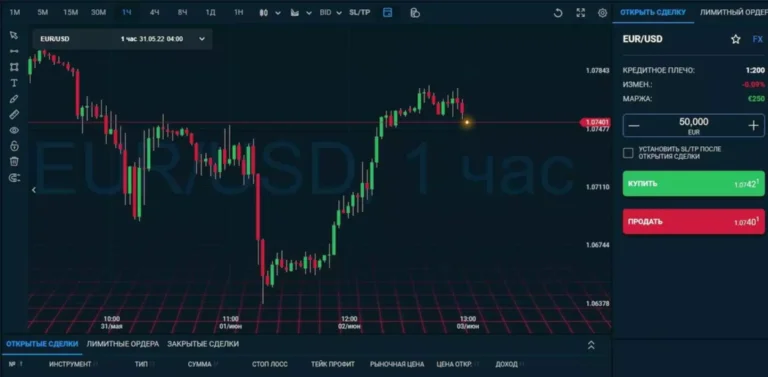Content
Tools within ProRealTime – including the optimization suite and unique coding language – make it easy to create, backtest and refine your own algorithms from scratch. More fully automated markets such as NASDAQ, Direct Edge and BATS (formerly an acronym for Better Alternative Trading System) in the US, have gained market share from less automated markets such as the NYSE. Economies of scale in electronic trading have contributed to lowering commissions and trade processing fees, and contributed to international mergers and consolidation of financial exchanges. Merger arbitrage also Prime Brokerage called risk arbitrage would be an example of this.

Pros and Cons of Algorithmic Trading
While the following advanced strategies can in theory be done by individuals, they are typically performed for institutional investors with substantial capital and lightning-fast industrial hardware. Seeking Alpha is a site that crowdsources investment research written by more than 16,000 contributors, all of whom are required to disclose their portfolio holdings. It features a diverse array of opinions and investing approaches that makes it an invaluable resource for investment due diligence. Over the next few minutes, we’ll unravel the mysteries of these seemingly complex strategies, delving deep spot algo trading into their building blocks and exploring the tools that make them possible. The best way to follow this principle is to analyze how other Forex algorithms behave and study their moves.

The ‘Mag 7’ Strategy: Mag 7 Stocks to Buy for Massive 2025 Profits
Furthermore, this content is not intended as a recommendation to purchase or sell any security and performance of certain hypothetical scenarios described herein is not necessarily indicative of actual results. As more electronic markets opened, other algorithmic trading strategies were introduced. These strategies are more easily implemented by computers, as they can https://www.xcritical.com/ react rapidly to price changes and observe several markets simultaneously. Machine learning models can identify patterns and trends that help predict future price movements by analyzing historical price data.
Basic Strategies: The Building Blocks
As we’ve explored the world of algorithmic trading strategies, it’s clear that this style of trading provides a significant edge in today’s electronic trading markets. As a trader, it is crucial to choose the right algo strategy that aligns with your trading needs and goals. To implement a statistical arbitrage strategy, traders need access to historical and real-time data for multiple stocks. The algorithm uses statistical models to identify pairs or groups of stocks with a high correlation coefficient. It then calculates the optimal entry and exit points for each trade based on historical price patterns and risk management principles.
Free market data is seldom of good quality, and could put you at risk of getting inaccurate backtesting results. Multicharts comes with powerful backtesting features just like TradeStation. You can backtest your strategy as with most other advanced trading platforms, and perform Walk Forward and Cluster Analysis testing. Algorithmic trading strategies are backtested rigorously before employed and traded live. This ensures that you know your odds before you start trading, and can adjust your position size accordingly.
There are a few special classes of algorithms that attempt to identify “happenings” on the other side. These “sniffing algorithms”—used, for example, by a sell-side market maker—have the built-in intelligence to identify the existence of any algorithms on the buy side of a large order. Such detection through algorithms will help the market maker identify large order opportunities and enable them to benefit by filling the orders at a higher price. Generally, the practice of front-running can be considered illegal depending on the circumstances and is heavily regulated by the Financial Industry Regulatory Authority (FINRA). The strategy will increase the targeted participation rate when the stock price moves favorably and decrease it when the stock price moves adversely.
It trades on a market tendency that is limited to only a few hours of the day. Effectiveness depends on market conditions, trading goals, risk tolerance, and available resources. The most suitable approach depends on your circumstances, technical capabilities, market understanding, and capital.
However, this is compensated by the outsize winning trades, that compensate for the losses. Position trading is another form of trading that easily can be traded algorithmically. If you ever have been on trading forums, you have probably heard about traders who want advice on what computer they should get. They are worried that their computer is too slow to be able to optimize through hundreds of thousands of iterations, and ask for advice. For example, Amibroker is superior to both Multicharts and Tradestation when it comes to backtesting baskets of securities.
The algorithms combine these data points using specific formulas to generate buy or sell signals. Each signal contains precise entry points, position sizes and risk parameters based on the strategy’s requirements. The information is being presented without consideration of the investment objectives, risk tolerance, or financial circumstances of any specific investor and might not be suitable for all investors. At the heart of this transformation is algorithmic trading, or trading executed using pre-set instructions. Using the latest technology, trades can be completed at speeds and frequencies impossible for mere mortals. Most traders don’t have money to pay for powerful computers and expensive collocation servers.
These strategies are coded as the programmed set of instructions to make way for favourable returns for the trader. The set of instructions to the computer is given in programming languages (such as C, C++, Java, Python). Following which, the computer can generate signals and take the trading position accordingly. Trend-following algorithms identify and trade in the direction of price movements, while mean reversion strategies capitalize on price deviations from historical averages by trading price reversals. Whether you’re a seasoned investor or just starting out trading algorithms can help you achieve more consistent and efficient trading results while minimizing human error and emotional bias.
- With algorithmic trading, you are free to do whatever you want while the computer takes care of the trading for you.
- Conversely, it can be set to sell stocks if the 30-day average falls below the 120-day moving average.
- In this test, we buy once the market has performed two consecutive lower closes, and sell one day later.
- However, this is easier said than done as trends don’t last forever and can exhibit swift reversals when they peak and come to an end.
- For example, as per the automated analysis, traders open-close or enter-exit trades.
- Although we are not specifically constrained from dealing ahead of our recommendations we do not seek to take advantage of them before they are provided to our clients.
- One can create their own options trading strategies, backtest them, and practise them in the markets.
Algorithmic trading has been shown to substantially improve market liquidity[90] among other benefits. However, improvements in productivity brought by algorithmic trading have been opposed by human brokers and traders facing stiff competition from computers. A wide range of statistical arbitrage strategies have been developed whereby trading decisions are made on the basis of deviations from statistically significant relationships. Like market-making strategies, statistical arbitrage can be applied in all asset classes. Stock reporting services (such as Yahoo! Finance, MS Investor, Morningstar, etc.), commonly offer moving averages for periods such as 50 and 100 days.
On August 1, 2012 Knight Capital Group experienced a technology issue in their automated trading system,[97] causing a loss of $440 million. While many experts laud the benefits of innovation in computerized algorithmic trading, other analysts have expressed concern with specific aspects of computerized trading. This section explores various aspects of evaluating and optimizing algorithmic strategies, including performance metrics, risk-adjusted returns, and portfolio diversification and allocation. Additionally, seeking advice from experienced traders or consulting professionals can provide valuable insights and guidance. Remember, the best strategy is subjective and may vary for different traders. You might find a particular strategy useless, but it might offer invaluable diversification for another trader.
Hedge funds and institutional investors use it for high-frequency trading, executing thousands of orders in milliseconds to capitalize on small price fluctuations. To the same extent, automation eliminates unnecessary expenses due to the mistakes made by the emotionally influenced decisions. This code initiates a buy order when the fast-moving average crosses above the slow-moving average, signalling an uptrend. This is a basic example, and most strategies incorporate risk management parameters, such as stop-loss and take-profit settings, for better control. Stay tuned for Part II to learn about other algorithmic trading strategies. Pairs trading is one of the several strategies collectively referred to as Statistical Arbitrage Strategies.
What I really wanted to demonstrate by showing you this daytrader, is that there really exist great trading strategies that consist of easy logics. As a beginner, that might be hard to grasp at first, which very understandable. You really have no point of reference, and for many, it is intuitive to expect that more advanced works better. For both Multicharts and Amibroker you will have to find an external data provider. Keep in mind that you will need both historical data and real-time data.



